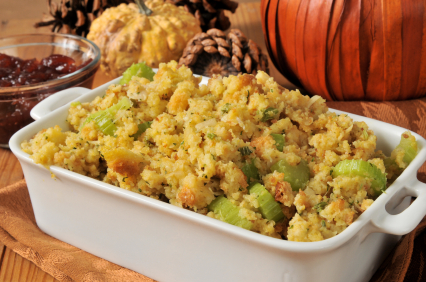 As we sit down to observe Thanksgiving, I would like to encourage parents to think long and hard about the dietary choices that you will make today. According to the Centers for Disease Control and Prevention (CDC) more than one third of American children and adolescents are overweight or obese.
As we sit down to observe Thanksgiving, I would like to encourage parents to think long and hard about the dietary choices that you will make today. According to the Centers for Disease Control and Prevention (CDC) more than one third of American children and adolescents are overweight or obese.
The CDC describes the most common cause for being overweight and obese as a “caloric imbalance”—too few calories expended for the amount of calories consumed. In lay terms, that means you eat far too much – much too often and you exercise far too little – not nearly often enough.
Don’t Stuff Yourself on Thanksgiving
When you sit down with your family and loved ones, you are not just eating a meal; you are also and more importantly modeling dietary habits for your child. The dietary habits that you choose for yourself may have a lifelong and lasting effect on the way your child views food and health. If you are like most Americans, you will most likely consume more than 4,500 calories and 229 grams of fat when you eat your Thanksgiving dinner.
In the span of one hour or so, the average American will in one meal consume enough calories for the daily dietary needs of two or more days. In the span of sixty minutes or so, the average American in one meal will consume enough calories for the daily dietary requirements of two or more people. When you consider most people will still eat breakfast, lunch and perhaps a late evening snack, the amount of calories and fat consumed in one day is not only astounding but dumbfounding.
Thanksgiving is the day that we take a break from our daily schedule to give thanks for living another day, week, month and year – a day to give thanks for our health, friends, and family. Unfortunately for many, Thanksgiving Day has become the perfect example of the word oxymoron.
A day set aside to celebrate life has as adopted as its main event, overeating – an activity which reduces our life span. So today before you begin stuffing your face, unbuttoning the top button on your pants for additional room to cram something else in your mouth and begin the incessant nibbling on one more pieces of anything, consider these facts provided by the CDC:
• Obese youth are more likely to have risk factors for cardiovascular disease, such as high cholesterol or high blood pressure. In a population-based sample of 5- to 17-year-olds, 70% of obese youth had at least one risk factor for cardiovascular disease.
• Obese adolescents are more likely to have prediabetes, a condition in which blood glucose levels indicate a high risk for development of diabetes.
• Children and adolescents who are obese are at greater risk for bone and joint problems, sleep apnea, and social and psychological problems such as stigmatization and poor self-esteem.
• Children and adolescents who are obese are likely to be obese as adults and are therefore more at risk for adult health problems such as heart disease, type 2 diabetes, stroke, several types of cancer, and osteoarthritis. One study showed that children who became obese as early as age 2 were more likely to be obese as adults.
• Overweight and obesity are associated with increased risk for many types of cancer, including cancer of the breast, colon, endometrium, esophagus, kidney, pancreas, gall bladder, thyroid, ovary, cervix, and prostate, as well as multiple myeloma and Hodgkin’s lymphoma.
By all means, enjoy the day by celebrating and sharing good food with your family and loved ones. However, remember that the average American’s dietary requirements are based on 2,000 calories. More importantly, remember that the fate of your child’s health & happiness and to some extent the American Healthcare System is like that fork you are ready to put in your mouth – in your hands.
You can either make a conscious choice to teach your children to eat to live or they will learn by your actions that they should live to eat. Both options include the same three words. Only one of those two choices will be the catalyst for continued Happy and Health Thanksgivings.